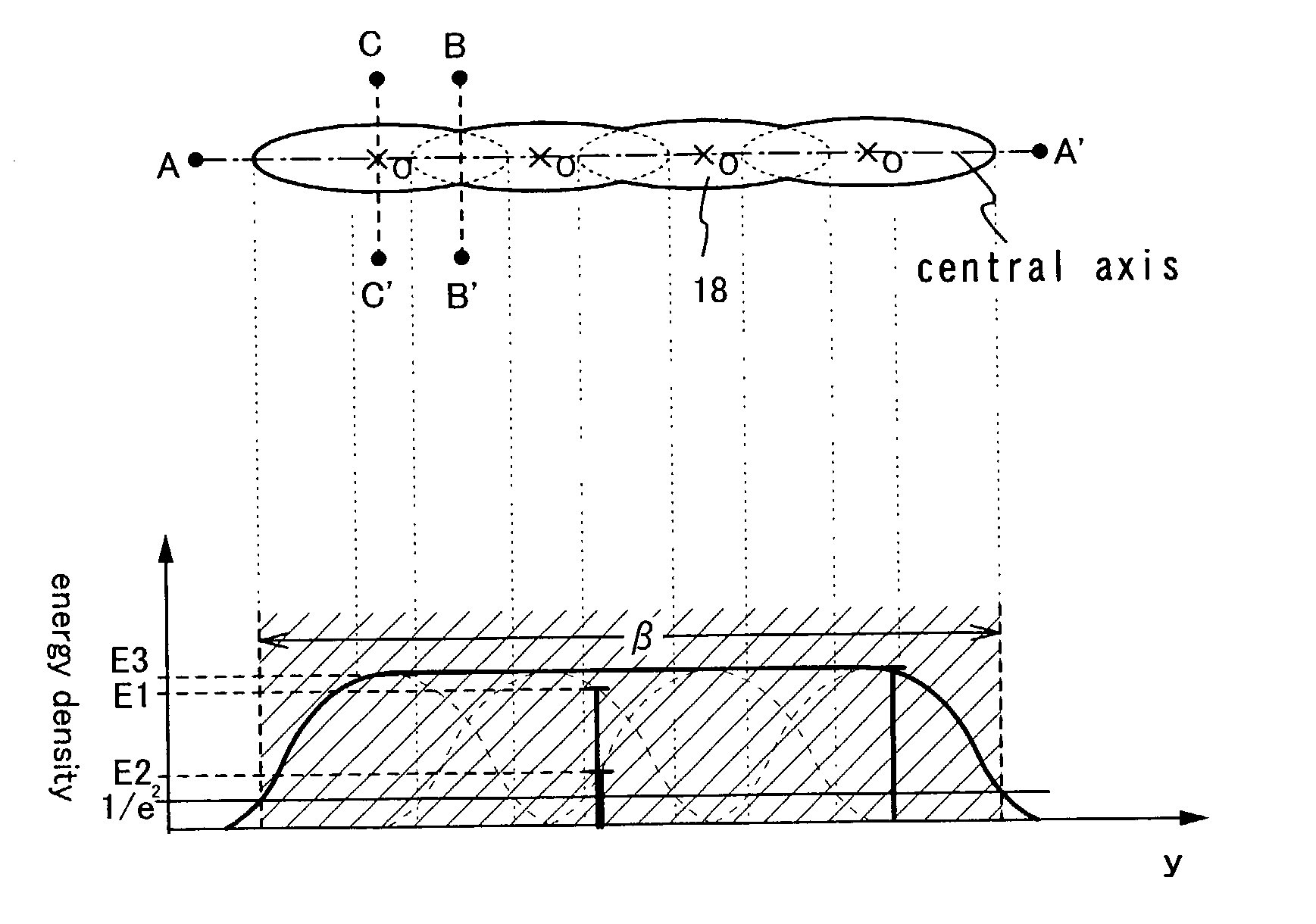Laser irradiation method and method of manufacturing a semiconductor device
a laser irradiation and semiconductor technology, applied in the direction of individual semiconductor device testing, semiconductor/solid-state device testing/measurement, instruments, etc., can solve the problems of poor substrate processing efficiency, inferior heat resistance of glass substrate, and inability to achieve the effect of reducing the number of laser irradiation beams
- Summary
- Abstract
- Description
- Claims
- Application Information
AI Technical Summary
Problems solved by technology
Method used
Image
Examples
embodiment 1
[0173] Embodiment 1
[0174] This embodiment describes optical systems of laser irradiation apparatus used in the present invention, and the positional relation between a slit and each of the optical systems.
[0175] FIGS. 17A to 17D show optical systems of this embodiment. The optical system shown in FIG. 17A has two cylindrical lenses 401 and 402. Laser light entering from the direction indicated by the arrow passes through the two cylindrical lenses 401 and 402, which modify the shape of the beam spot of the laser light. The beam spot travels through a slit 404 to irradiate a processing object 403. Of the cylindrical lenses 401 and 402, 402 is closer to the processing object 403 and has a shorter focal length. In order to avoid return light and irradiate uniformly, the incident angle at which laser light enters the substrate is set to larger than 0.degree., desirably, 5 to 30.degree..
[0176] The optical system shown in FIG. 17B has a mirror 405 and a planoconvex spherical lens 406. Las...
embodiment 2
[0186] Embodiment 2
[0187] This embodiment describes an example in which plural laser oscillation apparatuses are used and the width of a beam spot of laser light is changed by an AO modulator in the middle of laser light irradiation.
[0188] In this embodiment, a computer grasps a laser light scanning path based on mask information inputted. Furthermore, this embodiment uses an AO modulator to change the direction of laser light outputted from any one of the plural laser oscillation apparatuses to prevent the redirected laser light from irradiating a processing object and thereby change the width of the beam spot in accordance with the mask shape. In this case, although the width of the beam spot is changed by the AO modulator, a region of the beam spot that is low in energy density still has to be blocked in the direction perpendicular to the scanning direction. Therefore, control of the slit width and blocking of laser light by the AO modulator have to be synchronized.
[0189] FIG. 18...
embodiment 3
[0208] Embodiment 3
[0209] This embodiment describes, in relation to the energy density, the distance between centers of beam spots when they are overlapped.
[0210] In FIG. 21, the energy density distribution in the central axis direction of each beam spot is indicated by the solid line and the energy density distribution of the synthesized beam spot is indicated by the dashed line. The energy density value in the central axis direction of a beam spot generally follows Gaussian distribution.
[0211] Assume that, before synthesization, the distance in the central axis direction of a beam spot where the energy density is equal to or more than the peak value, 1 / e.sup.2, is 1. Then, the distance between peaks is given as X. An increase from the peak value of the average valley value to the peak value after synthesization is given as Y. The relation between X and Y obtained through simulation is shown in FIG. 38. Y in FIG. 38 is expressed as a percentage.
[0212] In FIG. 38, the energy differe...
PUM
 Login to View More
Login to View More Abstract
Description
Claims
Application Information
 Login to View More
Login to View More - R&D
- Intellectual Property
- Life Sciences
- Materials
- Tech Scout
- Unparalleled Data Quality
- Higher Quality Content
- 60% Fewer Hallucinations
Browse by: Latest US Patents, China's latest patents, Technical Efficacy Thesaurus, Application Domain, Technology Topic, Popular Technical Reports.
© 2025 PatSnap. All rights reserved.Legal|Privacy policy|Modern Slavery Act Transparency Statement|Sitemap|About US| Contact US: help@patsnap.com



